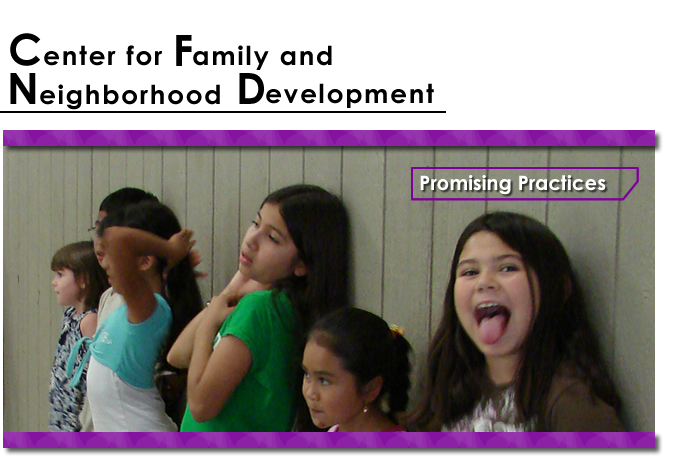Teen Pregnancy Prevention Promising Practices - download pdf |
| 01. |
Involvement of Family and Other Caring Adults is crucial when it comes to teenager’s sexual behavior and risk of early pregnancy. Programs that incorporate family involvement are more effective in preventing teenage pregnancy. |
| 02. |
Sex Education matters when it comes to providing youth with knowledge and skills that empower the decisions they make based on what they will know. |
| 03. |
Employment Opportunities generate positive self-esteem and create self sufficiency. These conditions motivate teens to delay early childbearing. Establish a connection between educational courses and career options. |
| 04. |
Access to Medical/Mental Health Services provides teens the needed support and encouragement to use contraception effectively and consistently. This is also an avenue for teens to discuss reproductive health issues with a professional. |
| 05. |
Academic Assistance Programs improve young adult’s educational opportunities, in turn, instilling a belief in a successful future. An individual academic plan designed specifically for each teen allows the individual to keep track of their past progress and future needs. |
| 06. |
Self Expression yields insights and self expression at the same time. It also allows teens to explore serious issues such as gender, sexism, racism, and sexual coercion. Self Expression can take the form of music, dance, drama, and other art forms. |
| 07. |
Individual Sports enables young adults to learn self discipline and impulse control. |
| 08. |
Service Learning promotes positive values, helps reduce risk behaviors, improves critical thinking and problem solving, and increases job preparedness, good citizenship, and empathy for others. When programs combine volunteer community service with a group discussion it has been shown to reduce the rate of teen pregnancy. This component requires youth to assess their community issues, plan and take action, and make a positive change in their communities. |
| 09. |
Inclusion of Males in Programs plays a positive role in the improvement of teenage males’ contraceptive behavior. It is important to make the male component of a program just as vital as the female component. |
| 10. |
Target hard-to-reach and underserved young people before a high-risk behavior is adopted. A program has improved successful results if it incorporates reaching out to youth before they become sexually active. |
All of these best practices should incorporate an assessment of the community’s needs, existing services, and cultural relevance.
* Sources: Best Practices in Teen Pregnancy Prevention Practitioner Handbook, University of California Agriculture and Natural Resources; Child Welfare League of America (www.cwla.org/programs/pregprev.htm); Carrera Adolescent Pregnancy Prevention Program (www.stopteenpregnancy.com/ourprogram/) |

